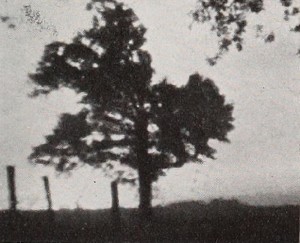
"Holiday with the Heavers is one of those rare films that display sincere artistic sensitivity that is manifestly not the product of technical skill nor the "slick" application of the rules of composition and film planning. It is a picture that promises that its maker — Dr. W. Lynwood Heaver — with more cinematic experience, might produce the finest type of amateur motion picture. Holiday with the Heavers is not a record of a family jaunt, as its title would imply. Rather, it is a scenic study of fall, enlivened by the presence of a three year old who investigates a park and explores the autumn leaves. Included in the film are beautiful and eerie shots of the late fall, effective silhouettes and charming closeups of the small actor." Movie Makers, Dec. 1943, 478.
"Contrasts life in Belgian Congo under Belgian colonial government to that of tribal rule." National Archives.
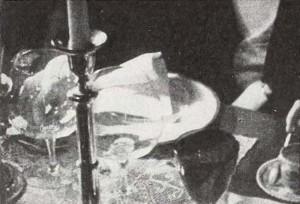
"I'd Be Delighted To!, directed and photographed by S. Winston Childs, jr., ACL, is that kind of production often planned but seldom made — a film story told entirely in closeups. Presenting the simple incident of a dinner a deux in a gentleman's apartment, the picture runs through 400 feet of brilliantly chosen, strikingly filmed, significant closeups. It is adroit, amusing and sophisticated, and a splendid example of what, with skill and care, can be done in this distinctly advanced amateur filming method." Movie Makers, Dec. 1932, 562.
"In this connection, one of the honorable mention films, William Murphy's 'If Rugs Could Talk,' deserves special mention. Consisting of close-ups of hands and feet in a manner perhaps too reminiscent of the still remembered 1932 prize film, 'I'd Be Delighted [To],' 'If Rugs Could Talk' was a technical achievement of the first order, for it consisted entirely of interior scenes, made by artificial light, and photographed entirely on positive film, reversal-processed at home." American Cinematographer, Feb. 1938, 75.
"In the Beginning, although far from being a perfect picture, is nevertheless one of the few truly great films thus far to come from a motion picture camera — either theatrical or amateur. Here, the magnificent beauty and awesome strangeness of the natural world have been seen in their fundamental and ultimate meanings. As an interpretation of the epic story of creation, In the Beginning follows directly in the noble tradition of Homer, Dante and Milton. One is left stilled and humble before the simple purity of imagination which conceived it. To this superb document of nature, F. C. Ells, ACL, the producer, has brought a technical skill and sensitive craftsmanship more than equal to the demands of his subject. Using as his titles direct quotations from the first chapter of Genesis, Mr. Ells has added a subtle undertone to the beautiful King James English by the use of primitive, geometrical symbols (indicative of fire, rain, infinity, etc.) for his title backgrounds. Somber and stunning scenes of the heaving waters, the new born earth and bursting streams in the first reel are followed, in the second, by flawlessly executed telephoto and macroscopic studies of the earth's myriad creatures. Integrating the entire production is a musical accompaniment of stately church music, recorded on disc by the Sistine Choir. Mr. Ells, who has looked upon the earth and found it good, has produced a sincere and beautiful film, great even as it falls short of perfection." Movie Makers, Dec. 1935, 550.
"Film is about the efforts a husband and wife take to make a lifetime supply of ink, only to find that it isn't worth it. Written, directed, acted, photographed by Charles (Dr. Charles E. Phillips) and Jean Phillips" Archives of Ontario.
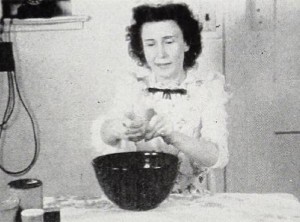
"With the help of four wild ducks and two cooks, Dan Billman, jr., has produced a gay film of contrasting culinary abilities. With understandable economy, he has allotted only one duck to the novice cook, while three are given to a jewel of the kitchen. The preparation of the birds in competent hands is a delight to watch, for the closeups of each step are examples of superb interior lighting. The abandon with which the beginner mixes the dressing and what happens to her stuffed duck in cooking are presented in ludicrous contrast. The Inside Story has as its climax an attractive sequence of serving the perfectly roasted birds at a family dinner. A light touch is added by gay titles and their accompanying sketches, while special mention must be made of the fine scene shot from outside the house at night, to reveal the warm interior of a pine paneled room through the black tracery of the casement window frames." Movie Makers, Dec. 1945, 494-495.
"An Interlude in Happy Isles, made by Dr. Delmer J. Frazier, is one of those comparatively rare vacation pictures that tell their story in detail, but only in that detail which will mean something to an audience that did not have the good fortune to take the same trip. We have no road signs nor guide maps (except for cinematic effect), we don't even know where "Happy Isles" may be. All we know is that the Frazier family has a delightful time there; that they plan their trips with care; that they love the woods and the wild life; and, finally, that their appreciation of it all thoroughly entitles them to an interlude of pleasure. This film is an excellent technical job — the interiors at the beginning of the picture are beautifully lighted, and follow shots of the squirrels in the woods are quite amazing. However, it is the continuity of this picture, with its well planned incidents, that gives it Honorable Mention." Movie Makers, Dec. 1936, 549.
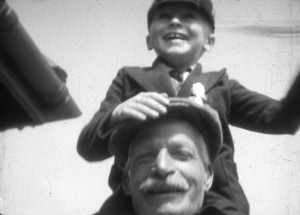
"Made by local amateur filmmaker Charles Scott, the film documents civic and public life in Norwich leading up to World War II and immediately following its conclusion. Beginning in 1933, Scott records acrobats, tightrope walkers and trapeze artists at the Norwich Carnival. The 1933 Armistice Parade features soldiers marching through the streets, halting at the eleventh hour. In 1934, Scott shows the Lord Mayor's Sunday celebrations at the Cathedral, as well as highlights from that year's Carnival. In 1935, Norwich celebrates the silver jubilee of King George V with decorations, parades, a military salute and an air display. January 1936 sees Norwich City Football Club taking on Chelsea in an FA Cup match at the newly built Carrow Road Stadium, with Scott capturing some of the action from his position behind the goal at the River End. Later that year, Scott returns to the Norwich Carnival once again, this time to catch an appearance by Hollywood starlet June Clyde. Norwich celebrates the coronation of King George VI with an extravagant street procession in May 1937. In 1938, with Britain gearing up for war, the Air Raid Precautions team practise fire-fighting and rescues, and test a new extension ladder. Following a break for wartime service, Scott returns to his film in 1946, documenting Battle of Britain Week by visiting the graves of servicemen and recording celebrations and parades in Norwich. Scott's film concludes with a visit to the home of prize-winning model engineer W.F.A. Way, who demonstrates some of his models on his garden track" (EAFA Database).
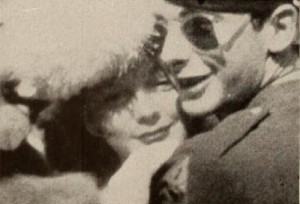
"An eye for topical touches and a persistence that would shame the most aggressive news cameraman are responsible for Terry Manos's success in recording the V-E Day activities in New York City. Without the aid of a telephoto lens and balked at every turn by finicking guards, Mr. Manos's camera nevertheless caught the full flavor of the celebration in Times Square as well as some amazingly sharp studies of the personalities who participated in the program at Central Park. For ignoring the theoretical limitations often ascribed to the 8mm. camera and producing a well knit movie of a great historical event, praise is due to an enterprising amateur." Movie Makers, Dec. 1946, 488.
Total Pages: 29